| |
|
|
Last
updated winter 2011
EMERGENCY CALL
AMBULANCE
Information on this webpage is compiled by
Magnus Andersson & Tomas Dahlgren
|
|
Are
you ready for one of the most critical jobs ever? Well then, hop in!
You need to be quick, brave, clever, and a damn precise driver. The
one thing you don't want to be is competitive. Why, you ask? Because
it's not your life at stake here, it's your patient's.
Don't expect any powersliding, burnouts or any other fuel-powered
extravaganza. It's emergency time! Now, let's get medical! |
|
 



What's
this all about?
- To educate you about the Emergency Call Ambulance. And to explain to
the average game reviewer how horribly wrong they are.
This game is brilliant!
My friend Magnus and I are together trying to collect as much information
as possible about this amazingly underrated game. Ever since it came out
in 1999 it has bothered me in many ways due to its originality, design,
and especially its scoring system. On top of that, ECA is a beautiful,
timeless piece of digital art published by SEGA, and it has been shamelessly
overlooked. This webpage is about revealing the game's qualities, and
letting people understand its brilliance.
Perhaps it's not that strange why this game hasn't drawn much attention;
there's no real speed! Nor is there any competition racing! Or flashy
cars! So, what is there?

The game: You get the opportunity to drive an ambulance vehicle down the
streets of a beautifully recreated environment inspired by the city of
Chicago. In various weather conditions and at different hours of the day,
you will be presented with four individual cases where you drive your
patient to the ER.
 

Each case is related to a different accident and place. The objective
of the game is to drive as quickly as your immediate surroundings allow,
which means that you will be challenged by various incidents and obstacles
during the course where you will need to make quick decisions. Manouvering
your vehicle well is only a small part of succeeding. Driving quickly,
but carefully planning ahead as you go, is the key to completing the game.
As is, ofcourse, practice.
 

...
and that was the basic objective. There is more.
The fact that our game here does not settle with a single objective, is
what makes it interesting. Besides implementing a complex scoring system
which rarely repeats itself to the point, there is also a set of distinguished
decorations, or ''bonues'' if you like. At the end of each case you are
potentially awarded with either of these decorations. Depending on your
driving skill and your awareness of the route at hand under stressful
situations, you affect which of these decorations will be lit at the end
of each case.


| Scoring
good does not come from arriving at the ER fast. Nor does 'time' (which
is infact your patient's health) accumulate from the previous case.
You start off with 99 health units each case, counting down. |
|
Patient's health, your time: countdown is momentary faster when
you hit things, and in the later cases as you arrive at the ER your patient
usually hasn't got much health left. So to score well you will need to
drive carefully rather than fast. The Health is divided into 'split seconds',
that is tenths of one full unit. If you have a quick eye you will notice
those tenths become lost as you crash into things, just under your upper
left Health counter.
Patient's heart rate, and blood pressure. I'm not a doctor so this
doesn't tell me much, but it is displayed at the top, middle section of
the screen, and it beeps faster and more frequent the lower the patient's
health is. (If you're a doctor, please educate me on this.)
Patient's condition is a very enjoyable screen to watch, unless
you're doing the driving. It shows what's going on in the back of your
ambulance. You watch your colleague (the nurse) tending to the patient,
and depending on your driving the patient's condition stays stable, or
becomes a life threatening disaster. As long as the 'Condition stable'
is on screen you're doing alright.
Infact, the whole top section of the screen is about your patient. Your
colleague is constantly communicating with you about where to turn, how
you drive, and she even has the nerve to comment your misstakes. Everything
in both speech and text.
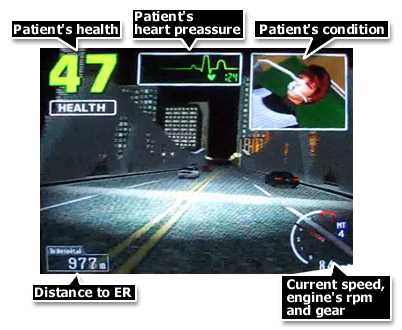
The bottom part of the screen isn't as intresting to watch. However there
is some seemingly unimportant information such as the distance to the
ER, your current speed, gear, and engine 'rpm', to make you feel that
you're actually inside of an ambulance vehicle, driving.
Theories about earning extra points by driving in certain high risk places,
or making risky moves haven't been proven. However, it is certain that
the ''Brave'' bonus is variable, and can potentially award you a higher
score if you are brave more often.

Secret - Special - Brave - Stable - No Damage
 What we know
about these decorations (or bonuses), is that they will increase your
score considerably. The No Damage is awarded if you are able to drive
the complete course without as much as a scratch in the paint of your
vehicle. If you bump into, or touch another car or object, or drop too
hard from a jump, you will not be awarded the No Damage. What we know
about these decorations (or bonuses), is that they will increase your
score considerably. The No Damage is awarded if you are able to drive
the complete course without as much as a scratch in the paint of your
vehicle. If you bump into, or touch another car or object, or drop too
hard from a jump, you will not be awarded the No Damage.
 There is a background counter of any damage you cause your patient during
the trip to the ER. Note that damage is done by simply taking a corner
too fast, or landing too hard after a jump. It basically means: less damage
equals greater score. Trying to maintain the 'Condition stable' text on
the 'patient & nurse monitor' by taking certain turns and bridges
at slower speed should deduct minimal points from your final Stable bonus.
There is a background counter of any damage you cause your patient during
the trip to the ER. Note that damage is done by simply taking a corner
too fast, or landing too hard after a jump. It basically means: less damage
equals greater score. Trying to maintain the 'Condition stable' text on
the 'patient & nurse monitor' by taking certain turns and bridges
at slower speed should deduct minimal points from your final Stable bonus.
 Drive
... bravely? Whatever the programmers meant by this. We have found that
if you make an occasional jump at certain places, or speeding across an
open bridge jumping, or going fast up a slope so that your wheels at some
point leave the ground, you will score the Brave award. For the beginner,
this is probably the easiest award to earn because it compromises both
the Stable and No Damage awards. Drive
... bravely? Whatever the programmers meant by this. We have found that
if you make an occasional jump at certain places, or speeding across an
open bridge jumping, or going fast up a slope so that your wheels at some
point leave the ground, you will score the Brave award. For the beginner,
this is probably the easiest award to earn because it compromises both
the Stable and No Damage awards.



 The
Special award is really a secret, and it is a challenge to find. It's
an invisible spot in each of the four courses, which if you pass it will
shout: "Good job!". This takes a bit of exploring, and the Special bonus
is often found by accident. However when you discovered it you won't forget
it. The
Special award is really a secret, and it is a challenge to find. It's
an invisible spot in each of the four courses, which if you pass it will
shout: "Good job!". This takes a bit of exploring, and the Special bonus
is often found by accident. However when you discovered it you won't forget
it.

 
The Special in case #1 is exactly under the sign with the happy chef.
If you drive close enough to it you will trigger the bonus without taking
any damage. In case #2 the Special bonus is in the street close to the
amazingly ugly piece of art. And in case #3 it's right through the burning
gas station. In Case #4 it's between the inside of the building pillar
and the red falling beam about halfway in the route.
 Update
on this bonus! (December 11, 2011) - Magnus has recently managed to film
his achievement of the Secret bonus on Case#3. Conclusion is that the
Secret is awarded when you arrive with 0.00 Health at the ER, which makes
the bonus quite difficult to achieve, however not implossible. Update
on this bonus! (December 11, 2011) - Magnus has recently managed to film
his achievement of the Secret bonus on Case#3. Conclusion is that the
Secret is awarded when you arrive with 0.00 Health at the ER, which makes
the bonus quite difficult to achieve, however not implossible.
When you read our older theories about then Secret bonus you will find
that we were pretty close to uncovering it. It is a purely Health related
bonus.
(Old
speculations) As for the Secret bonus... Well, it's just very secret.
Very little is known about it. I've accidently managed to light up the
Secret three times. Twice on Case #3 and once on Case #4. I was driving
casually, not paying attention to how I was driving. Still I managed to
arrive, and there it was.
And long before me, Magnus managed to catch the Secret on the fourth case.
But just like I, he doesn't recall any extraordinary events relating to
it, except that the time was very close to zero.
Last time I was lucky enough to take a photo of the Secret lit up at the
end of the last Case. As you can see I received four out of five bonuses,
leaving No Damage off. All bonuses can be earned individually, they are
not related to each other in any way.
Noted was that Health was very close, or exactly zero. So one theory would
be that the Secret is triggered by finishing with 0 Health left, or at
least with an even '00 Health. This is very difficult to manage as the
health is divided into tenths. So consiously timing it would be almost
impossible.
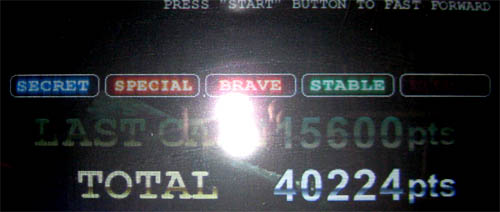
What
you can tell from all of the above is that there's a ''game inside the
game'' going on. The Ambulance is one of the most complex and mysterious
games I've ever experienced from SEGA regarading the scoring system.
If you know anything about the Secret, please email:

... or the forum.


 
Its manual gearbox utilizes four gears, and it can reach speeds up to
around 160 km/h. There's an automatic alternative available for beginners.
The vehicle is thoroughly recreated in finest detail, inspired by the
genuine 90'ies something Ford Ambulance Van, it has double rear doors
and one on each side in the front. Equipped with sirens, lights, colored
stripes and dual pipes, plus state of the art medical equipment in the
back. It's
a reliable vehicle well suited for the task of an ambulance.
All in all its handling performance is sufficient, but could be slightly
more direct. However, it is a compromise between the abillity to cope
with certain degree of terrain, as well as a flat tarmac surface, and
the versatile city environment.
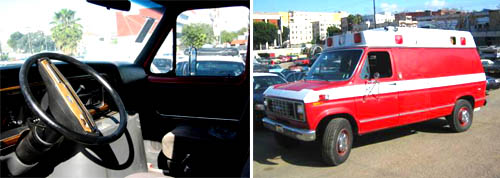
There is a rumor of a transformed vehicle, appearing as a ''stretcher''
with two people running along side of it. However, this rumor is best
examined in the >> Trivia section of this
here webpage.


 
The streets of Chicago ... by day, and by night. Highways and industrial
complexes, city centers, down town alleys as well as large recreational
areas with sea side parks and famous landmarks are all very thouroughly
represented in exquisite detail.

 
Also you will notice that the streets are always the same, that is; every
time you drive on a particular street, all traffic in that segment will
behave exactly the same as the last time you played the game. Cars, busses,
trucks, even pedestrians, all are set in a pre-programmed pattern which
makes the game very predictable. You could say that the game has a very
low AIQ.

 
This does, however, not bring the game down in any way. The traffic is
secondary and doesn't interfere with the job, you simply need to learn
its pattern. Infact, it is necessary for the traffic to act in a repeated
pattern to keep equal terms between players when competeing. Because there
are, behold, still some nutcases left in the world who actually compete
for the highest score.
 |
Perhaps it isn't the most notable element in the game, but the L-train
is often represented throughout all four cases. |
|

Because ECA is a slightly more sophisticated than for example Out Run,
you could use a bit of advice to make your efforts more worthwhile.
 |
Acceleration
here is not as immediate as a 400 hp race car. When you get your
speed up, keep it there. Let go of the gas a little if you need
a more controlled steering, you almost never need to brake.
|
 |
Stay
off pavements. Make a habbit of not driving for to long on pavements,
or you will lose speed. Speed on the pavements reaches about 80
km/h. Use pavements only briefly when cutting corners.
|
 |
To
take a corner at high speed, first let go of the gas some, then
turn sharply and step on the gas pedal all the way. There will be
some tire screeching but that's alright. Just keep in mind that
the higher speed you have while turning, the harder you make your
partner's job of keeping the patient's condition stable. So keep
a smooth and fluent driving, especially around sharp corners and
uneven surfaces.
|
 |
You
are allowed to go into opposing lanes because you drive an ambulance.
Most traffic, excluding police cars and fire trucks, will give way
to you. Use it to your advantage.
|
 |
Traffic lights and traffic signs don't apply here. It's not a driver's
test. Take shortcuts through parks, lawns and cut corners across
pavements if necessary, to shorten your route.
|
 |
Look for shortcuts and places to drive where you haven't tried before.
Exploration is the only way to gain more knowledge about the route
and the scenery. And perhaps you will discover a secret. Try a different
path some times.
|
 |
You cannot kill the pedestrians, but you can make them scream.
|

By ''dangers'' I mean the not so obvious things you think about when you're
speeding towards the ER. Like under water, or in space, never ever get
frustrated. It won't do you any good. Because you have very small margins
completing the later three cases in ECA you need to focus on what is important
to keep your patients health in as good condition as possible.

Watch out for lamp posts. Unlike trees, these are not always clearly visible
from a distance. Learn where they are so that you can deflect when necessary,
especially as you cut street corners.
 |
When
braking in sharp turns, always do it softly or your vehicle will
oversteer or spin, especially on a wet surface.
Slamming the brakes is OK as long as it's on a straight or on dry
surface. Sometimes you need to decrease speed quickly.
|
| Beware
of the red plastic cones on case #4. Even though these, in reality,
are pretty soft and do no damage whatsoever, in ECA they will harm
your patient. So keep a distance. |
|
 |
Fire
trucks and police cars will not give way to you, so you need to
give way to them. Remember that these guys are on assignment too.
Learn the patterns of traffic.
|
|
Pay attention before, and after jumping an open bridge! The danger
here is that you may think that flooring the gas pedal will make you
clear the bridge quick and easy, but this is where you're wrong. |
|
Large
open bridges are to be taken with caution. Keep your speed untill
you're almost at the bridge, apply some brake and hold your speed
around 70-90 km/h and keep your vehicle straight forward. Remember;
if the health-meter blinks for an instance, your No Damage bonus is
smoked. And when 'landing', keep you foot lightly on the gas pedal
untill you have cleared the bridge completely.
Similar warning applies when approaching steeper slopes on certain
roads. Again, mind the 'Nurse monitor' and 'Condition stable' indication. |

What would a game to be, or not to be, without at least some trivia?
|
ECA uses SEGA's steel standard driver's seat with a 29'' monitor,
and a force feedback steering wheel. No link, no competition, single
player game, however one exclusive detail is the flashing lights
at the top of the cabinet, along with its pop-art cut out board
thing above it all. It may not be the optimal cabinet for this game,
but it is sufficient.
The game hardware is a Model 3 step 2.x made i Japan board-set,
cooled by two 80x80x10 fans. It can get pretty hot inside there,
but not as hot as a summer day in Chicago.
|
|
Are you a friend of the environment? Skip the car and get 100% manual.
While at the vehicle selection screen, change gears in the following order:
up-up-down-down-up [with the original sequential shifter], or 3-3-4-4-3
or 1-1-2-2-1 [if using a 4-position shifter].
 

As I mentioned in one of the earlier sections, the Ambulance is one of
the most complex and mysterious games I've ever experienced from SEGA.
It doesn't have any staff credits at the end as you complete the
game, or anywhere during attract sequence. The only information about
its origins says "SEGA 1999".
I have thoroughly searched the game ROMs (memory) for any clues or names
of what people were involved in the project. It's kind of like Stonehenge!
Who made it?
The
creator behind ECA was SEGA's team called AM1. Head
of staff was Rikiya Nakagawa who later became head of WOW Entertainment.
However he resigned in 2004, and I've not found anything new about
him since.
(Information not confirmed. My sources are >>1
and >>2 |
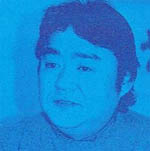
|
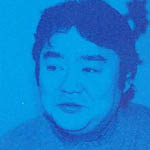 |
Mr
Nakagawa is known for other SEGA titles as well, some of them being Out
Runners, Sky Target, Indy 500, Wave Runners, House Of The Dead, Harley-Davidson
& LA Riders, Ski Champ, Get Bass and the Die Hard series, so he has
done plenty. Infact he has done enough to last me a life time with ECA
and its secrets.
The other ambulance vehicles. It would have been very strange if
we were the only ambulance in town. There are ofcourse others. We see
them at the beginning of Case#1 at the accident with the trailer truck.
And we meet other ambulance vehicles during our drive to the ER. Our ambulance
has number ''73'', we can easilly see that by switching to the 'outside
view'. But why is there another ambulance with that same number?
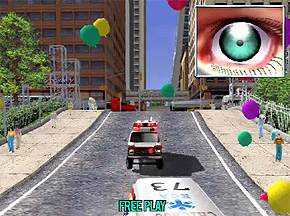 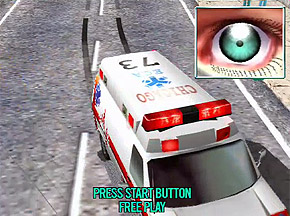
What
is odd is that our fellow colleagues are leaping into the water. Why?

 
Appearing from the corner at the left up the slope (left picture), speeding
downwards and straight into the water (pictures two and three).
Loss of Engine sound is also something which makes me wonder if this
is some bug, simply an oversight by the programmers. Or if it actually
is some kind of indicator. If so, for what?
Crashing boosts your speed sometimes, especially when getting hit
or hitting something with your side. Bug or bonus? - I've been involved
in these side-crashes sveral times when instead of losing speed, I gain
a whole lot of it! However, your No Damage is smoked.
Great speed can be achieved, up to 163 km/h, by gearing to neutral
and then quickly to fourth again. Just like in Crazy Taxi and the 'Crazy
Dash', you get a speed boost each time the fourth gear kicks in. This
way you can go very fast on the straights.
Changing 'View' anywhere outside the parking-building in case #3, will
make the haze change color tone to appear less dense.
In case #4 there seems to be some sort of timing between the lightning
and as you cross the last bridge before turning upto the highway.
Just as you cross this bridge, there's a lightning flash.
The game does have working traffic lights. These change from time
to time between red, green, yellow and back to red. If it affects your
score at the end of a case is not known.
In case #2, you can see yourself in the mirror in one of the glass
walls/windows on the building next to the 'Special'. There are plenty
of are similar reflective glass walls in this case, but none of them will
reflect you, only that particular one. So when on case #2 do some window-browsing
just before you go for the Special, and you will see your reflection.
You
cannot drive in the opposite direction. The invisible hand of
the almighty programmer will flip your vehicle right back on track,
and there's nothing you can do about it.
Why this is, and how it would affect the game had it been otherwise,
we don't know. Why is turning back a bad thing? And why is driving
off-road limited to only pavements and certain shortcuts?
I'm sure there's a bug around this... |
|
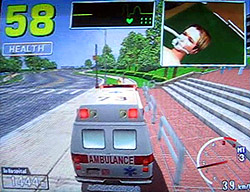
|
..
and there actually is!
In Case #1 there is a bug that allows you to turn around and drive
back. It's at the and of the highway where the 'other ambulance'
meets you. Cut across the lawn with the trees, turn a bit too early
so that you touch the hedges, there you can turn and drive back
to a certain point, where you will be turned around again.
We have since found other places where it's possible to turn around
and drive back.
|
In
the ending sequence, if you compete all four cases of the game...
The president is handing you your medals at the award ceremony, you
are about to see him put a medal around your partners neck. The next
cut shows you shaking hands with the president, but somehow your partner
hasn't got a medal hangning around her neck, which is quite odd because
she did receive one a minute earlier.
On a side note, the medals have 'SEGA' engraved in them. |
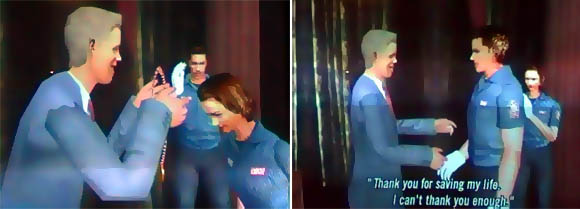
"Take
corners in a straighter manner, and go slower past red lights."
I am not sure whether this has an effect in ECA, or not. However,
I have been talking to real ambulance drivers on a couple of occasions,
and I have found out a few differences between regular civilian driving
and professional emergency vehicle driving techniques. So let us keep
these *real life facts* in mind when playing ECA, and see where it
will take us regarding that secret-bonus.
|
|
- Cornering: Sharp turns are to be taken carefully so that the vehicle
will not sway too much to the sides. Keeping the vehicle stable is
important, especially with a patient in the back.
- When running red lights, which ofcourse is allowed as an ambulance
driver, your speed must be no higher than 15 km/h. However in real
life this limit isn't practiced very often due to the ambulance being
in a hurry, the speed past reds is mostly higher than 15 km/h.
- And finally, when two emergency vehicles, both on dispatch, meet
in traffic, 'Priority to the right' is to be implemented between the
two.
(Thank you Maria.G for this information 2011-05-15 on lunch
break outside ICA Maxi shopping centre.) |
...

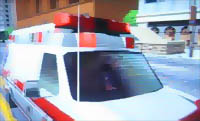 |
If
you wish to contact either Magnus or me regarding anything on this
webpage, please do so by e-mail or in our forum
>> here. Thank you.

|
  
|

